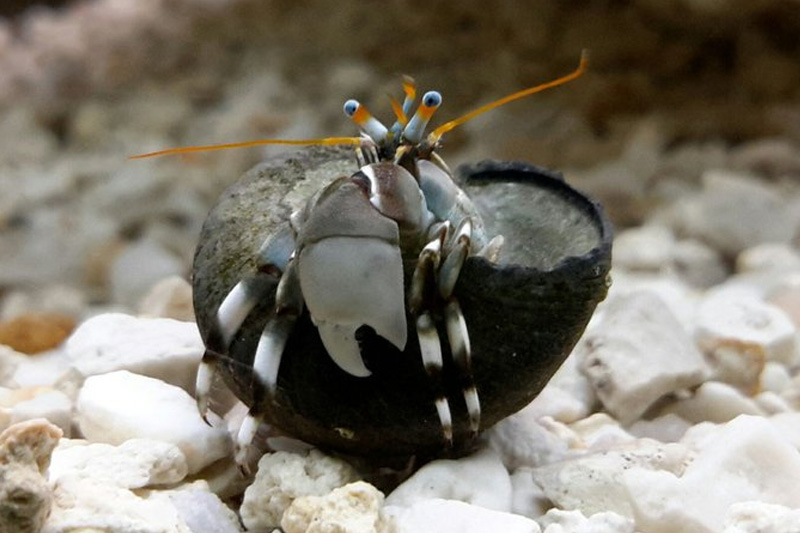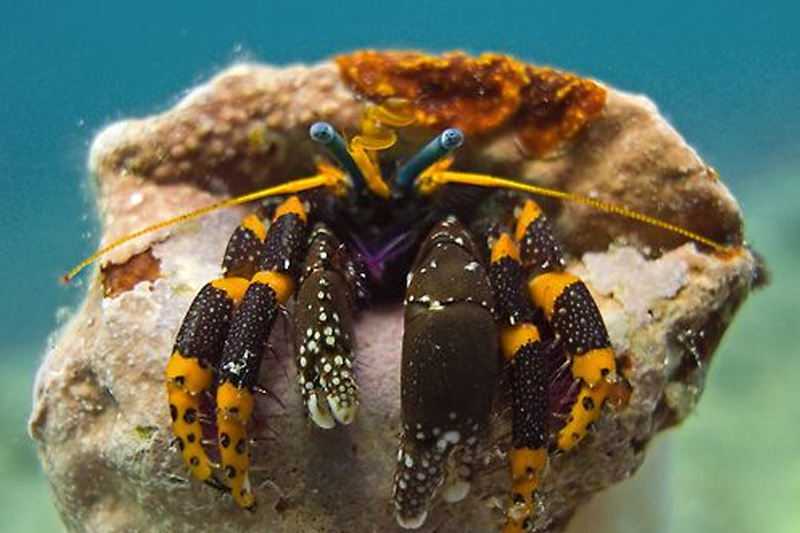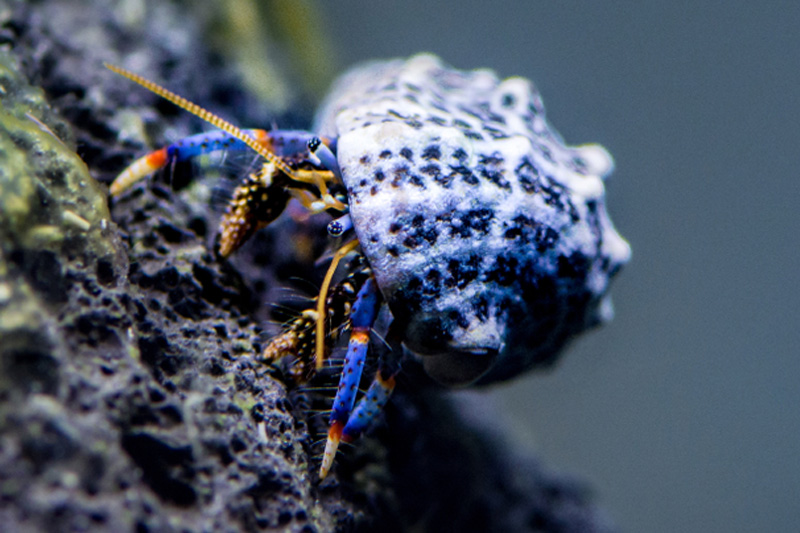The Best Marine Hermit Crabs for Your Reef Tanks
If you’re thinking of taking care of hermit crabs, it’s important to note that not all of them are considered reef tank-safe. There are actually hermit crabs known for their destructive behavior to corals and they even feast on other fishes.
But don’t worry there are hermit crabs out there that reef-tank safe and these hermit crabs are fairly smaller species and won’t be able to eat other fishes in your reef if you decide to place it with your other fishes.
Blue Leg Hermit Crab

Quick Notes:
- Size: Up to 1.5 inches
- Diet: Omnivore
Clibanarius tricolor or Blue Leg Hermit Crab – as its name suggests, this hermit crab’s main characteristics is its blue legs with orange-red banding. This hermit crab is also native and mostly located in the Caribbean.
Blue Leg Hermit Crabs’ behavior is that it likes to live in abandoned shells such as snail shells. So if you’re planning to take care of this species, make sure you provide them with empty shells or else fight off other hermit crabs for its shelter.
They are also a nice addition to your reef tanks as a “cleanup crew”. It will eat leftovers or uneaten food in the reef. And it’s not just food but algae that as well.
Blue leg hermit crabs are omnivores so you won’t be having problems with feeding them.
Red Tip Hermit Crab

Quick Notes:
- Size: Up to 2 inches
- Diet: Herbivore
Dwarf Red Tip Hermit Crab or simply known as Red Tip Hermit crab is an omnivore and also a valuable addition to your reef’s “cleanup crew”, just like the Blue Leg Hermit Crab. Their species can be found in coastal waters of Mexico. They are also known as keen to scavenge for food. It will feed on algae and detritus.
Red Tip Hermit Crabs thrives in saltwater and just like Blue Leg Hermit Crabs it likes to shelter in abandoned snail shells. So don’t forget to provide them shells with various sizes and shapes so they won’t have to fight over shells with other hermit crabs.
Important to note as well that their species are ideally kept in a reef with plenty of algae and live rocks they can gaze upon.
Yellow Tip Hermit Crab

Quick Notes:
- Size: Up to 1 inch
- Diet: Herbivore
This Hermit Crab species is one of the uniquely colored members of the Diogenidae family. They are found mostly in the coastal waters in Vietnam.
Just like its hermit crab cousins – the Red tip and Blue leg hermit crabs, they are keen as well in scavenging their food. It’s small size allows the yellow tip hermit crab to fit and scavenge on tight spots in live rocks. Its diet mainly consists of algae and cyanobacteria (red slime algae).
Zebra Hermit Crab

Quick Notes:
- Size: Up to 1 inch
- Diet: Herbivore
Zebra Hermit Crabs are found in the intertidal areas of Hawaii through the Central and Eastern Pacific. It is also considered as one of the most popular hermit crabs when it comes to home marine aquariums. As the name suggests, its color looks like the stripes of zebra. It also has long eyestalks which are blue and fades into an orange-tngined on the upper half of the part.
Just like Yellow Tip hermit crabs, their diet mainly consists of algae and cyanobacteria (red slime algae) but if you don’t have access to these you can supplement them with dried seaweeds.
Electric Orange Hermit Crab

Quick Notes:
- Size: Up to 2 inches
- Diet: Omnivore
The Electric Orange Hermit Crab can be found mostly in the Hawaiian Islands. Just like Red Tip Hermit Crabs, they thrive and a great addition as well to saltwater reef tanks. You won’t be able to have a hard time in terms of feeding as well since they feast on uneaten food as well, and not just that they also eat many kinds of algae.
And if algae is not sufficient, dried seaweed is also an option for them.
They also like to shelter themselves in abandoned snail or triton shells. And in terms of their environment, they are better around with live rock outcroppings for them to forage in.
Halloween Hermit Crab

Quick Notes:
- Size: Up to 2 inches
- Diet: Omnivore
Halloween Hermit Crabs are found as well in Hawaiian Islands, its name comes from its vivid colors of orange and red leg bands which make it look like the common colors for Halloween. It can get really large compared to other hermit crabs on this list but don’t worry they can peacefully coexist in the reef tank.
And just like other hermit crabs on this list, they also eat various kinds of algae which includes green algae and cyanobacteria, leftover or uneaten food as well.
One important thing to remember is that if you decide to take care of this hermit crab is you should provide it with empty shells in various shapes or sizes. If you don’t, it will resort to attacking other snails or hermit crab in your reef for its shell.
